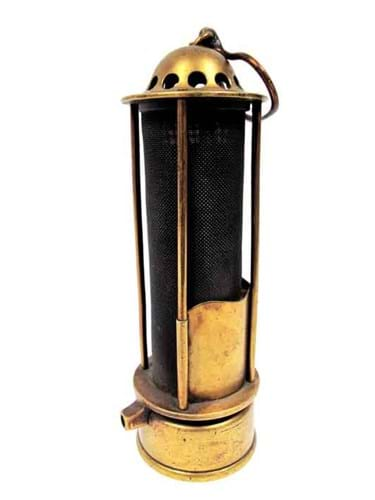
Offered together as a single lot, the other lamp was a typical brass and iron Davy lamp but this example was an altogether proposition. With the base stamped 11 and the internal safety glass intact, it was one of those designed by George Stephenson (1781-1848) which today exist in relatively small numbers and are the most desirable of all miner's lamps.
Indeed, these Geordie' safety lamps tell a remarkable story from the early career of the man who built the world's first public inter-city railway line.
Despite his lack of scientific knowledge, George Stephenson, engine-wright at the Killingworth Colliery in Northumberland, created a lamp for use in flammable atmospheres by trial and error. He presented his solution to the Philosophical and Literary Society of Newcastle on December 5, 1815, sparking accusations of plagiarism from the eminent Cornish scientist Humphry Davy who was privately working on a similar design.
Davy went to his grave convinced the 'uneducated' Stephenson had stolen his design. It was not until 1833 that Stephenson was properly exonerated when a House of Commons committee found that he had equal claim to having invented the safety lamp.
Stephenson's design (employing a glass cylinder to surround the flame rather than Davy's gauze) only proved popular in his native north east. But the example that appeared here at the Sheffield Auction on January 10 showed that nowadays they are considerably more sought after among collectors than the more commonly seen Davy lamps.
Although the printed estimate for the lot was just £20-30, the auctioneer, holding a run of commission bids, opened proceedings at £1200 before quickly fielding bids to £2600. The successful bidder was in the saleroom.
The buyer's premium was 17.5%.




